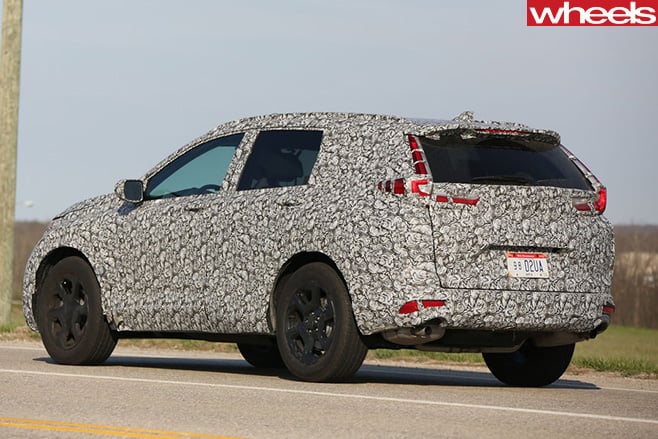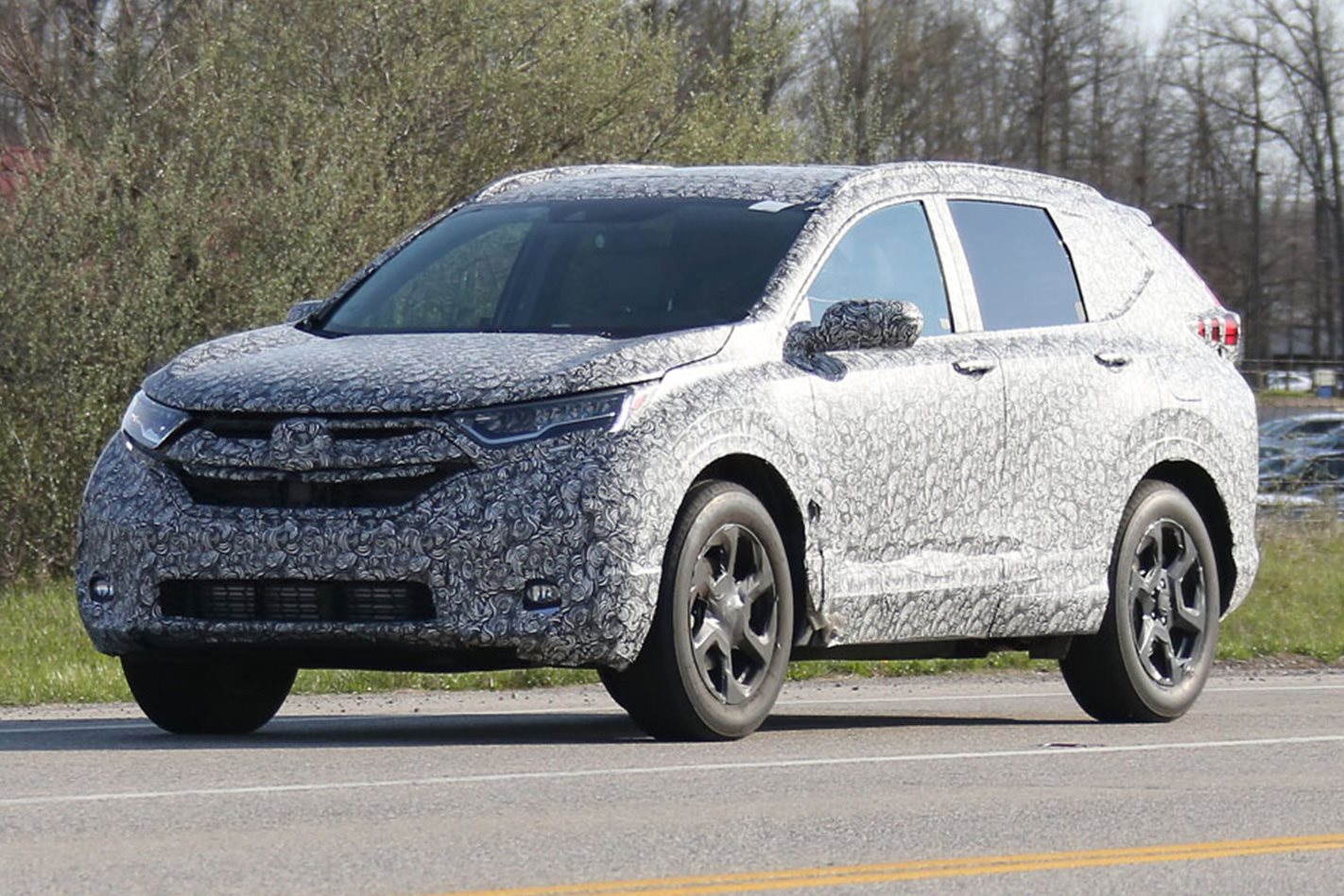IT’S ALL CHANGE for the next-generation Honda CR-V, which is set to gain a completely fresh set of clothes, interior, chassis, and engine choices when it debuts late this year or early in 2017, ahead of an Australian launch sometime not long after that.
Pitched, of course, against age-old foes like the Toyota RAV4 and Subaru Forester, as well as the Hyundai Tucson, Nissan X-Trail, and Mazda CX-5, CR-V number five seems like it might finally score a bit more style, judging by the aggressive nose, sculptured sides, and Volvo XC60-esque look of the tail-lights.
As the North American spy shots suggest, the 2018 Honda CR-V will be the largest yet, growing half a size to help make space for the super-successful Honda HR-V to blossom below it.
Consequently, the newcomer will offer the option of third-row seating, boosting the medium SUV’s appeal against similarly-configured competitors such as the X-Trail and Mitsubishi Outlander.
That’s been made possible by an all-new platform underneath, based on the soon-to-be-released Honda Civic’s transverse modular architecture.
Lighter, far stronger, and much quieter than the item found in the existing RM-series CR-V launched in 2012, this state-of-the-art platform will include redesigned suspension (including, we hope, the Civic’s impressively silent yet effective five-link rear end) and electric power steering system, to finally give the long-running medium SUV some much-needed steering, handling, and ride finesse.
Believed to be aiding the latter is new box-section chassis welding for increased rigidity and noise-path suppression, as well as triple door seals, thicker front glass, and an acoustic windscreen – advances all found in the related Civic Sedan.

Nevertheless, don’t be surprised to see a variation of the Euro-focussed 1.6-litre i-DTEC turbo-diesel mated to a nine-speed torque-converter automatic if fuel prices rise as predicted. Whichever engines make it to Australia, the choice of front or all-wheel drive will continue.
Progressive driver-assist technology like Autonomous Emergency Braking, lane-change warning, adaptive cruise control, and Rear Cross Traffic Alert systems are bound to be on the options list, matching more developed rivals like the CX-5 and Ford Kuga in offering state-of-the-art safety for a five-star crash-test result. As a result, the most expensive CR-V AWD variants will most probably nudge $50,000.
A one-time trailblazer in the medium SUV sphere, the CR-V cannot undergo its metamorphosis fast enough for Honda Australia, as sales are 5.5 percent down in the first three months of this year in a medium SUV segment that’s rocketed by over 15%. Coming in with just 6.1% market share, it trails the class-leading CX-5 (18%), Tucson (15.1%), X-Trail (14.2%), RAV4 (12.9%), Forester (10%), Kia Sportage (7.6%), and Outlander (7.4%).
Have spy pics of your own? We’d love to see them. Just email them to [email protected]





